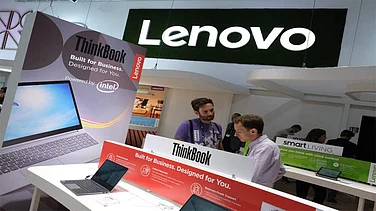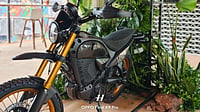
ASUS Vivobook S14 M3407KA targets casual users, students, and professionals
Features include 14” FHD+ OLED screen, AMD Ryzen AI 7 350, 32GB RAM, 1TB SSD
Lightweight metallic build, MIL-STD 810H certified, multiple ports
Another day. Another laptop. And yes, another Asus laptop. They’ve got better at streamlining their line-up for 2025, and I’m mighty glad about it. I have been taking the Vivobook S14 M3407KA for the past couple of weeks for a spin.
It’s got multi-day battery life (with a 70Whr battery, it is rated for up to 23 hours of video playback), the superb AMD Ryzen AI 7 350 processor, up to 32GB of LPDDRX RAM, 1TB SSD, an FHD+ Lumina OLED screen, an FHD IR camera, and a premium metallic and lightweight design (1.59cm and 1.4kg). The laptop has an ample number of ports and is wrapped in a US MIL-STD 810H Military Grade certified body.
Who is the Vivobook S14 Targeted at?
With two colours—Cool Silver and Matte Gray—and a sleek and lightweight design, the laptop is targeted at students, working professionals, and those who want a mix of work and play. It definitely isn’t targeted at gamers, nor is it for creative professionals who need to install the full Adobe Creative Suite and want to take full advantage of it.
Why do I say that? Well, it’s mainly because of the chip. This laptop is running on the more affordable AMD Krackan Ryzen AI 7 hardware. The Vivobook S14 sits below the standard Zenbook 14 model, despite the higher power from the chipset. This is mainly due to the lower-tier chassis.
The laptop looks identical to the 2024 model, so there isn’t much to say about the design. It’s elegant, well-made and ergonomic. This thin-and-light laptop isn’t unwieldy by any means, despite being a touch heavier than the Zenbook 14.
The chromed logo that reads Asus Vivobook is the only thing that stands out vis-à-vis the design. Other than that, you may dig into the sharper corners, on occasion, but this is far from a dealbreaker. Asus had to cut corners somewhere to get to this price point.
The sturdy hinge (Ergolift single hinge) is a win, as the laptop can open up to a 180-degree angle. On the left side, there is a USB-A, HDMI, audio jack, and two USB-C ports. On the right-hand side, there is one USB-A port.
Before I get back to my burning question, let’s talk about the trackpad that annoyed me, for the most part. Yes, the trackpad on the Vivobook S14 is huge. It’s large and spacious and can easily attract smudges. It’s fine for daily use, but because of the size, there are too many accidental touches.
More often than not, the brightness levels would just change. That’s only because my thumb used to keep brushing over the touchpad. Yes, even while writing this article it’s still happening. Unfortunately, the touchpad doesn’t double up as a NumberPad. There’s also no fingerprint sensor on the Vivobook S14.
The keyboard is a standard Asus layout, with full-size keys and top-function rows and arrows. The keycaps have rougher finishing, but it’s still a decent typing experience. My speed hardly reduced, and I got a good amount of feedback. It is a backlight keyboard.
Does It Work for the Casual Consumer?
The answer is a mixed bag with respect to the performance. Yes, the laptop will suffice for anyone who doesn’t need to push the laptop to its limit. I say that because (disclaimer: I’m all team AMD), the chipset is slightly underwhelming. Every time I try to push it, even a teeny bit, it stutters. For the most part, it is fine. But there are those moments where it just can’t handle a large number of Google Chrome tabs, or even a simple Google Docs document.
For gamers, this is an absolute no-go. Even one of my most favourite casual games, TrackMania Nations Forever, didn’t work as advertised. For the most part, it ran fine, but sometimes it stuttered, and the only way to fix that was to lower the graphics.
If you’re going to college and just need to take notes, write documents, and do research, then the Vivobook S14 is a top-tier laptop for that use case. I say this because the typing experience is good, the OLED screen is gorgeous, and the AMD chip will more than suffice.
Speaking of that OLED screen, it is 14 inches and does not have touch capabilities. It has a 16:10 aspect ratio, perfect for the use case I mentioned before. For binge-watching sports or typing long documents, the screen is sufficiently bright, has very sharp text, and doesn’t strain your eyes when looking at it for long hours.
Battery Life Is Good?
Yes! The Vivobook S14's best feature, besides its minimalist and classy design, is its battery life. It has a 70Whr battery under the hood, and with that, I was able to eke out two days of battery life on my medium-to-heavy usage pattern that involved zero gaming. I’d say that’s pretty good overall.
Verdict: Should You Buy It?
If you just need a laptop for daily use, then the Vivobook S14 will be a good purchase. Like I said, this laptop isn’t for the creative professional or the gamers. But with a gorgeous OLED display (yes, ASUS really is leading the OLED charge), great battery life, and a good keyboard, I’m happy to recommend this to the target audience: college students or those looking to buy their first laptop.
As of now, the laptop is available on the Asus India website for just Rs 67,990.00. In my books, that’s a very good and aggressive pricing.




























